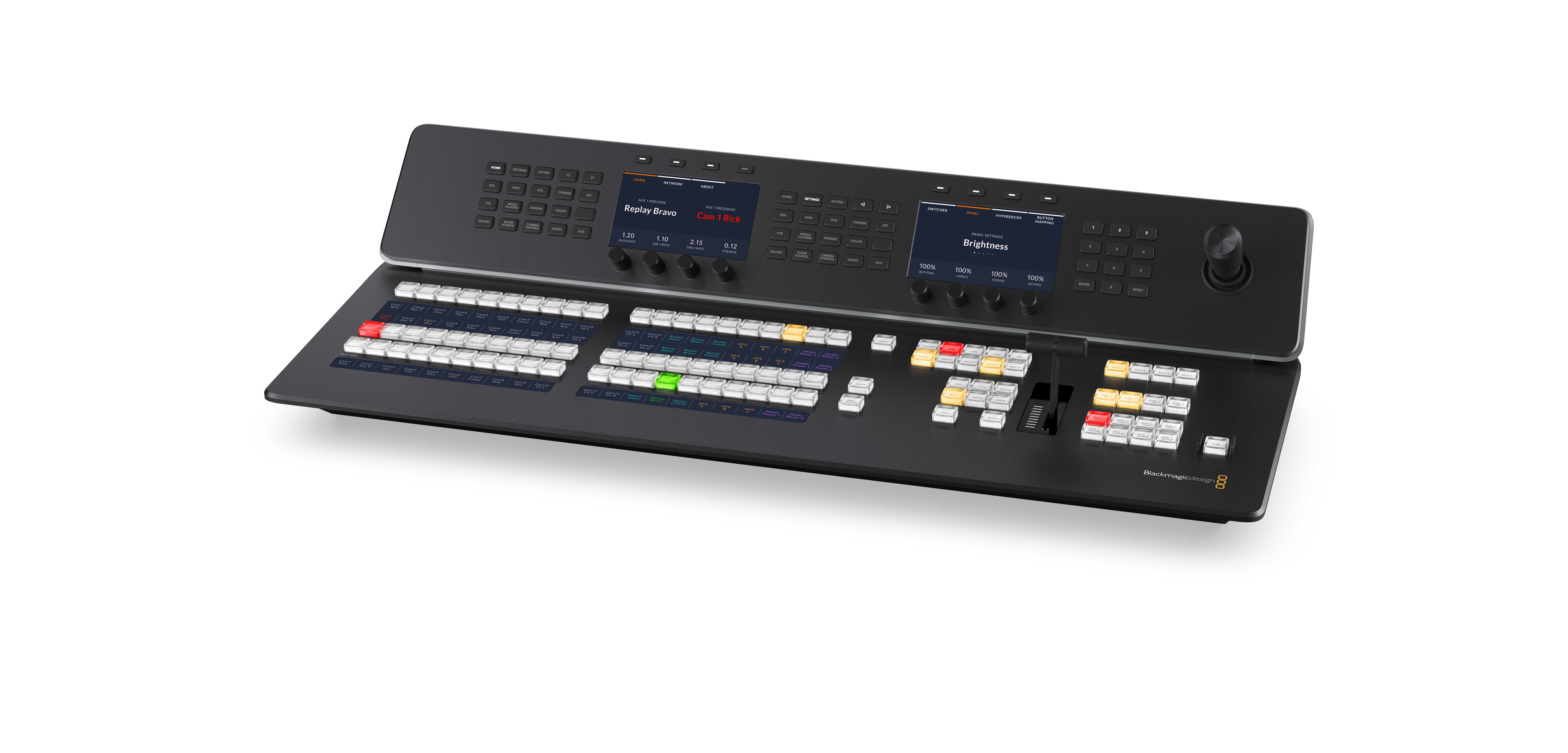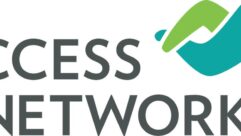
Broadcast Solution for Public Access TV, Part 1
Jun 14, 2011 3:09 PM,
With Bennett Liles
Listen to the Podcasts
|
Editor’s note: For your convenience, this transcription of the podcast includes timestamps. If you are listening to the podcast and reading its accompanying transcription, you can use the timestamps to jump to any part of the audio podcast by simply dragging the slider on the podcast to the time indicated in the transcription.
When a public educational and government access TV station gets funding for an upgrade it has to make very sure it’s the most needed one. Network and technical manager Patrick Thorp of Montgomery Community Media in Rockville, Md., saw a JVC camera upgrade as the way to go and he’s here to tell us how it all worked out coming up next on the SVC podcast.
SVC: Pat, thanks for being here for the SVC podcast from Montgomery Community Media in Rockville, Md. I love the work that PEG stations do and I’m always glad to have tech people here from those stations here on the SVC podcast. So tell us what exactly Montgomery Community Media is all about and what do you do there?
Patrick Thorp: Montgomery Community Media is a genuine federal 501 C-3 organization that was formed 25ish years ago in the mid 1980’s specifically to deal with a county contract to provide television services to the community members of Montgomery county. We exist under a governmental structure that’s called PEG, which stands for Public Education and Government. In the PEG system, cable companies like Comcast and Verizon and AT&T are required by local entities and in this jurisdiction that’s the county, to kickback a fee per cable subscriber to the local entity and then those funds are gathered and repurposed in essentially the public use of video. So county council meetings, city council meetings, the school system runs a couple of channels, the local community college, their video efforts are all funded through this structure. Our portion of that—although we’re not part of the county government, we are a 501 C-3—is to provide services to county residence which is known as public access in a lot of areas. [Timestamp: 2:21]
OK that’s the usual PEG formula.
Yeah, yeah—it’s the usual PEG formula. So we provide the services and we’re pretty much, because of the county that we’re in, we’re at or near broadcast quality production. [Timestamp: 2:34]
OK and what sort of programming is Montgomery Community Media doing?
We do all kinds. We have professional production group that exists within the company, and they provide services to the county. So a lot of times when they cover county council meetings, it’s our staff doing that and they also produce individual productions for different county events. They do a lot of jazz festivals, some awards ceremonies. They do a program lately in the last couple of years called ThinkGreen, which is an environmental show that’s produced inhouse and that kind of stuff goes back and forth over the years; sometimes they’re really up on production and sometimes they’re really not, but generally a lot of public awareness, political and road shows, and stuff like that. And then county residence can submit whatever they want to submit. If they use our facilities, we have a little bit of a say in what they do. They can’t just do their kids birthday party and say that’s my show, but if they’re outside like a lot of churches and groups like that they can just submit something—just hand us the video and we’ll put it on the air provided we have channel time for it. [Timestamp: 3:38]
Right, a huge variety of programming and probably a lot wider than you’ll find anywhere else. So on the tech side of things, you’ve got some new JVC cameras in there. What was the situation with that when you decided to go for the camera upgrade? What brought all that about?
Well, the primary reason for the upgrade was just getting time to replace the cameras and we’d been looking a long time. The county would like us to really be on probably a seven-year replacement schedule, and we’re on a 10 and we’re lucky to get most items replaced within that time period. So in somewhere of 2007, a guy named Michael Camello—who used to be the training instructor here for our studio and now is a college instructor out on the eastern shore of Maryland—and I started really looking for replacement cameras and we followed that through for a number of years saying, “What fits with our public access group?” –which is really citizens so they’re not always high-tech. They’re often learning. So you want a system that’s pretty easy to use to start with, but you also want something that’s not going to top out six months down the road and somebody just feels constrained. You want something that can really grow with them, and for a long time I was really starting to sweat bullets because I did not want to get back in the tape. There was plenty of tape around for a number of years, but you could see that everything shifting towards file stuff and whatever we purchased we were going to be with for the next 10 years. So we purchased in 2010—that means we’re not changing cameras till 2020 and by that time everything’s going to be different. [Timestamp: 5:14]
Yeah, you don’t know what’s going to be out there by then.
Right, right, but I know it ain’t going to be tape, and I know it’s not going to be standard-def, and I know it’s not going to be NTSC. So when the JVC cameras came along, and we have JVC 500s that we were still using some of and we currently were using at the time. I was just like, “OK, well, this could be the camera.” And we looked at a number of tradeshows and recorded stuff and did samples and brought it back and really studied over a number of years what direction we wanted to go in and I tell people—and I hate to sound like a promo guy for JVC—but if we had gone to Sony or NASA and said, “Here are our specifications, build us a camera,” it probably wouldn’t have been the JVC HM700s, but it would have been really darn close. It’s a standard form factor shoulder-mount camera. It’s got file recording, two SD8C cards, which is a huge deal for us because you are dealing with the public, and they got to provide their own media so something like an SxS card or a P2 card are $5 or $600. That’s difficult to go to somebody who was making cookies in their kitchen earlier in the day and go, “You want to participate? Just shell out a grand to buy your media.” [Timestamp: 6:30]
Right, they don’t really know where to go if they had the money.
Right, so the SD8C cards were a super deal being in a progressive scan, a 720p negative, which is really where we want to head as a station and then just the usage of the camera. There was a tradeshow in Baltimore a couple of years ago, and I grabbed a couple of people from here and went up. One of our facilitators and one of the pro guys and just standing there watching them. Within a couple of minutes, they were just racing through the menus. And that was one of the things that we had noted early on with a lot of the other cameras—they were extremely menu-driven, but it was really hard to find items that you wanted to adjust in the menus. So originally we were looking for a lot more button controls, everything on the side, and we looked at a couple of models that had that kind of thing, but it was just the JVC was really easy to use. So that, combined with the low media cost and the 720p and the pretty darn good image coming out of it, were really big selling points for us. [Timestamp: 7:25]
And you got the GYHM 700U and the GYHM 700UXT ProHD.
Right, we got five of each: three for the professional guys and seven for the public access side. [Timestamp: 7:37]
Broadcast Solution for Public Access TV, Part 1
Jun 14, 2011 3:09 PM,
With Bennett Liles
Yeah, that’s a real factor on having them easy to use because you never know from one week to the next who might be on a crew for something. Where do you recruit technical production people for the station?
In terms of production technicians, we are a Nabet CWA union house. For the professional production technicians and most of our people for that are people that are starting their careers, so generally out of high school or out of college they get their first job here, and then can step out from here to somewhere else. But they learn their trade here and that tends to be a nice thing because you got a lot of young people around who are very enthusiastic about it, but it also means that you are dealing with a lot of people that don’t have a lot of experience. [Timestamp: 8:19]
Well, you’re probably good on the training with those cameras I would figure.
Yeah, they do a lot of training on the cameras and a lot of really on hands—you get one of the guys who’s been here a couple of years and they will take other people out with them and they will learn through that hands-on process onsite at hump location. [Timestamp: 8:37]
So how is MCM equipped for postproduction?
Postproduction, we’re OK. We just, along with the cameras we were able to get—we use Final Cut Pro. So we were able to get new Final Cut machines—five of them—so in house we have six edits suites, two of which are still tape based, four of which are available for access users and those are Final Cut Suites, one that’s available for staff use that is pretty much taken up by the production department, and then a professional editor whose job is only editing and they have their own suite as well. [Timestamp: 9:11]
Well that’s good to have—that’s really good to have.
Yeah and that person gets a lot of work and he actually sits right next to my desk and he’s constantly coming out and going, “What is up with people? I can’t get all this work done.” So they’ve been very, very busy. Two of the production techs are editors as well and they also do an awful lot of work. [Timestamp: 9:3]
So you’re shooting in the field with HD, but you’re airing it in standard def?
We’re airing it in standard def and the studios are still standard def as well so that’s one of the things the county is very concerned about. They’ve talked a lot about it over the years. We were at a meeting a couple of years ago where they were talking to the Comcast guys and they said, “What about carrying us in HD?” and the Comcast guys didn’t blink an eye. They said, “We’re more than willing to carry you in HD, but you’ve got to understand our contract with the county says that you could carry it on the lowest available tier, and if we move you to HD you won’t be available to everybody—you would actually be a premium service.” [Timestamp: 10:07]
Yeah.
So down the road, everybody expects that’s going to happen and we’re working our way toward that end point and it’s just primarily funding at this point is the only thing keeping us standard def anywhere. [Timestamp: 10:21]
So after shooting and editing, you’re exporting you’re QuickTime files and rerendering that for air?
Yes, and one of the things about this place is kind of a wild west in that people can do whatever they want as long as we get a copy of what they’ve shot and produced, and it’s up to them how they do it, but our personal recommendation has been that if you’re using the field cameras you shoot it in HD, you edit it in HD, you finalize it in HD. That gives you an HD output and an HD master and then you take it back in the final cut and dump it out as a DV for airing or for distribution. So it gives you two copies and then you can do what you want with it. [Timestamp: 11:02]
OK you’re shooting out there in the field. I guess you’re taking the UXT version of the cameras out there for field work?
Yeah, the professional guys all have the UXT’s with the SxS card adapters on the back. We don’t have any SxS cards yet. We weren’t able to afford them when we purchased the cameras, but eventually, hopefully within this coming year within the next few months, we’ll be getting some of those because we really want people to be recording to the primary SDHC card but also backing up to the SxS card. [Timestamp: 11:31]
And they’re out there mainly shooting single camera stuff, bringing that in and editing and pretty much single producers?
Well they got a couple inhouse producers; they don’t have a ton, and those people tend to stay pretty busy and they do a variety of things. We do have a production system, which is a VT4 or a Tricaster—I guess Tricaster’s the newer version. But that’s a big system take out, but that is a five-camera location multi-switched unit, and they’ll do that for different events. That’s how they cover a lot of the jazz festivals is to take that out and shoot with that, and they typically wouldn’t use the HD cameras for that right now we’re looking at a product from DataVideo that is a smaller more compact unit. It’s more limited, but it’s basically a studio in a briefcase and it will do HD, has built in com system, and built in audio mixer for up to four cameras—four channels I think all around. So if we can get one of those that would help a lot with the system moving on. [Timestamp: 12:30]
Alright, well it sounds like you’ve got a pretty good handle on your upgrades with the new JVC cameras. That’s certainly a good start—PEG stations have to do what they can with what they’ve got and maximize resources all through the production chain. I’m really glad to have you here for Part 1 and in Part 2 I want to talk about your master control and automation and how you do audio and video switching and other things but I appreciate your being here for the first part of this thing.
Alright Bennett. Thank you very much.










